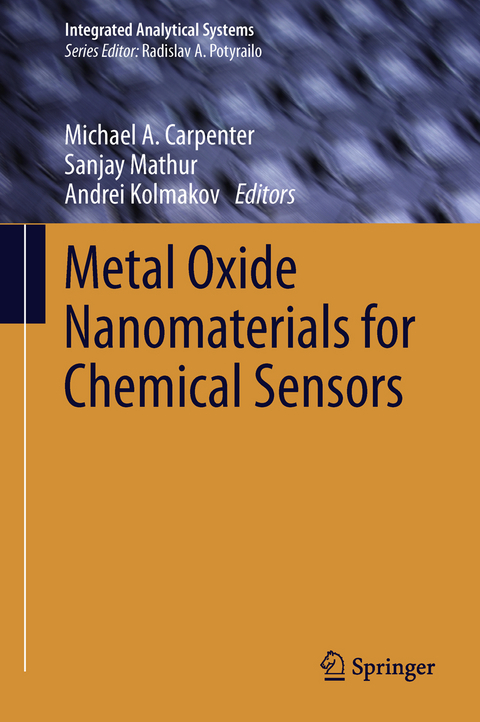
Metal Oxide Nanomaterials for Chemical Sensors
Seiten
2014
Springer-Verlag New York Inc.
978-1-4899-9806-4 (ISBN)
Springer-Verlag New York Inc.
978-1-4899-9806-4 (ISBN)
Here is a detailed review and analysis of metal oxide nanomaterial sensing principles; synthesis/deposition methods; low temperature sensors; insights gained from analysis of reaction mechanisms and challenges in the fabrication of sensing arrays and devices.
This book presents a state-of-the-art summary and critical analysis of work recently performed in leading research laboratories around the world on the implementation of metal oxide nanomaterial research methodologies for the discovery and optimization of new sensor materials and sensing systems. The book provides a detailed description and analysis of (i) metal oxide nanomaterial sensing principles, (ii) advances in metal oxide nanomaterial synthesis/deposition methods, including colloidal, emulsification, and vapor processing techniques, (iii) analysis of techniques utilized for the development of low temperature metal oxide nanomaterial sensors, thus enabling a broader impact into sensor applications, (iv) advances, challenges and insights gained from the in situ/ex situ analysis of reaction mechanisms, and (v) technical development and integration challenges in the fabrication of sensing arrays and devices.
This book presents a state-of-the-art summary and critical analysis of work recently performed in leading research laboratories around the world on the implementation of metal oxide nanomaterial research methodologies for the discovery and optimization of new sensor materials and sensing systems. The book provides a detailed description and analysis of (i) metal oxide nanomaterial sensing principles, (ii) advances in metal oxide nanomaterial synthesis/deposition methods, including colloidal, emulsification, and vapor processing techniques, (iii) analysis of techniques utilized for the development of low temperature metal oxide nanomaterial sensors, thus enabling a broader impact into sensor applications, (iv) advances, challenges and insights gained from the in situ/ex situ analysis of reaction mechanisms, and (v) technical development and integration challenges in the fabrication of sensing arrays and devices.
Michael A. Carpenter is an associate professor at the College of Nanoscale Science and Engineering at the University at Albany-SUNY. Sanjay Mathur is the Chair of Inorganic and Materials Chemistry at the University of Cologne. Andrei Kolmakov is an associate professor of physics at Southern Illinois University.
Introduction.- Understanding, characterization and synthesis of modern metal oxide nanomaterials.- Novel morphologies and signal transduction principles in metal oxide based sensors.- New device architectures and integration challenges.- Concluding remarks and outlook.
| Reihe/Serie | Integrated Analytical Systems |
|---|---|
| Zusatzinfo | XX, 548 p. |
| Verlagsort | New York |
| Sprache | englisch |
| Maße | 155 x 235 mm |
| Themenwelt | Naturwissenschaften ► Chemie ► Analytische Chemie |
| Naturwissenschaften ► Chemie ► Physikalische Chemie | |
| Technik ► Maschinenbau | |
| Technik ► Umwelttechnik / Biotechnologie | |
| Schlagworte | Chemical • nanomaterials • Oxide • sensors |
| ISBN-10 | 1-4899-9806-3 / 1489998063 |
| ISBN-13 | 978-1-4899-9806-4 / 9781489998064 |
| Zustand | Neuware |
| Haben Sie eine Frage zum Produkt? |
Mehr entdecken
aus dem Bereich
aus dem Bereich


